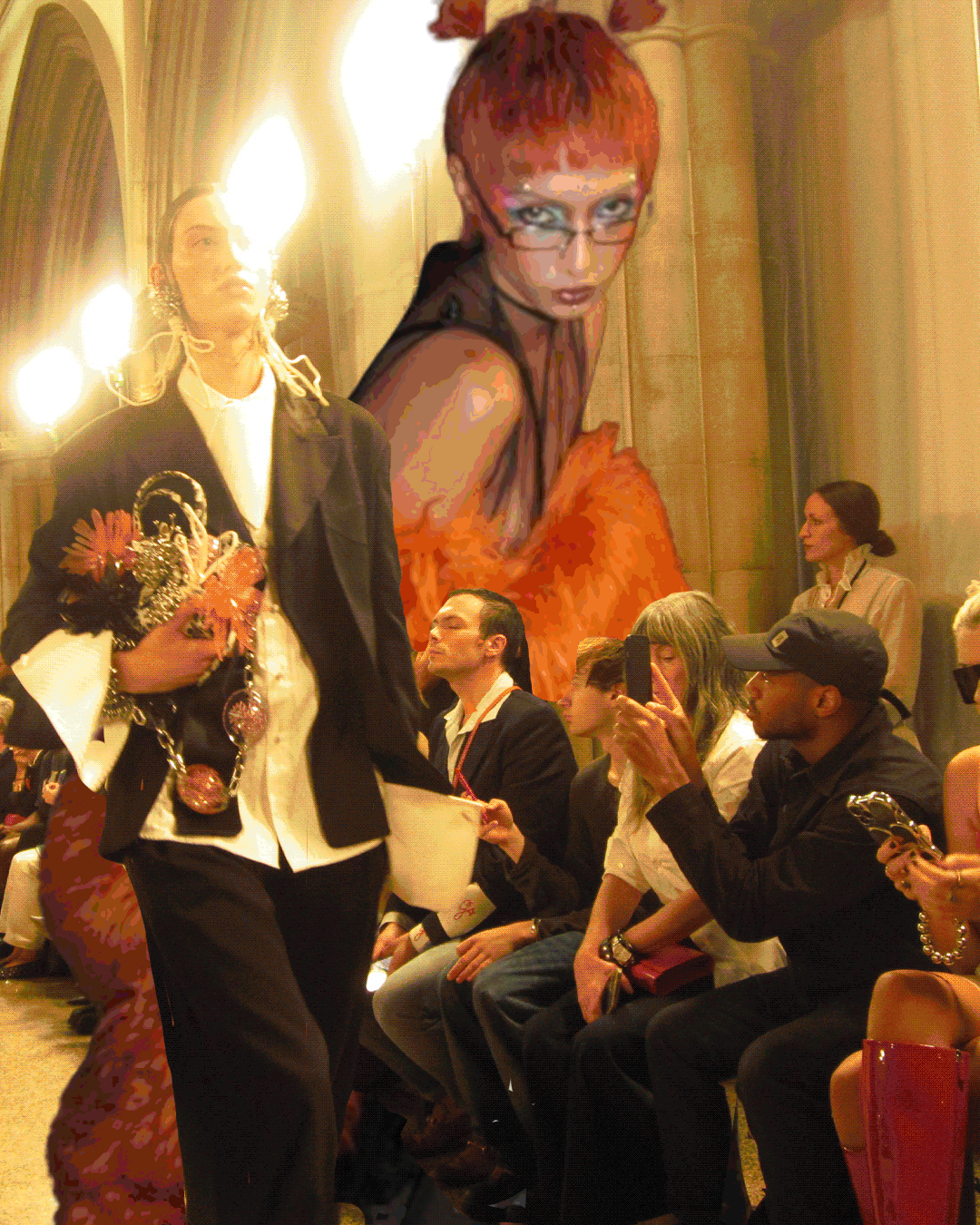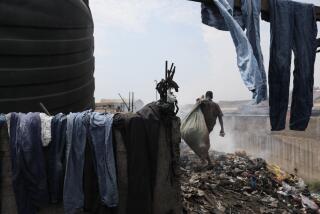The Young and Rebellious Send Designers to the Drawing Board--Again : Fresh Tracks
- Share via
The young woman prancing down the New York City sidewalk wore a snug leopard-print jacket, jeans and Vans snowboard boots.
Witnessing the spectacle during a business trip, Sari Ratsula had to laugh. As a designer of the clunky footwear intended for strapping onto a board, she had figured the sport’s anti-retro aesthetic would eventually infect fashion far away from any snow-coated slopes.
Despite snowboarding’s immense popularity and quick ascent to Olympic status (Japan, in 1998), it has held its edge. The riders represent the kind of rebellion that outsiders lap up. Ratsula, Vans’ senior vice president of sales and product development, was hardly the only designer to see the trend coming. In Southern California and around the world, apparel and accessories designers are retooling snowboard gear for urban streets and house-music nightclubs.
Verso’s loose nylon overalls and hooded jacket, for example, are cut entirely from glow-in-the-dark vinyl. A Liquid Affair’s CyberSnow collection is fashioned from iridescent, spongy polyurethane, reflective stripes and rubber patches. Favored in particular by techno heads, these futuristic clothes may not offer much defense against a blizzard, but they sure look like they can perform.
Atousa, the owner and designer behind A Liquid Affair, sees a natural link between snowboard garb and the club wear she sells to such boutiques as X-Sport in Los Angeles. All the details are there: shiny fabrics, fat zippers, dangling plastic hooks, goggles and big Mickey Mouse gloves adapted from raver style.
And there’s the attitude. “Snowboarding is not about blending in,” says Atousa, who pores over snowboard magazines like Fresh and Tasty in her Los Angeles studio. “It’s about being alternative. Hard-core club goers feel the same way. Snowboarding is fresh. It’s not retro. It’s not played out. It’s just hitting the rest of the world now. And it’s everywhere. It’s on Melrose. It’s an entirely different wardrobe from anything else.”
Yet elements of this itinerant trend have been spotted on the streets in Europe and Japan. The recent appearance of snub-nosed shoes seemed to give legs to the look. Credit there goes, in part, to the Italian company Northwave (no relation to the American firm by the same name), a snowboard boot manufacturer that last year put out an “off-season” shoe with a uniformly thick, Sorrel-like sole. (It’s available in the United States under the N Boots label.)
Oregon’s Nice Shoes (again, no relation to the New York City-based line of skateboarding footwear) produced snowboard-specific boots in Italy before introducing modified street models. When Seventeen magazine featured its daisy-printed Trip model in its October issue, Nice received 6,000 inquiries. The bad news: Excited teenage girls had to wait until this month to get their feet into a pair of the bulbous-toed sneakers.
Vans’ Ratsula named her lug sole with the generous bumper toe the Lumi, which means “snow” in her native Finnish. She believes the designs have helped rehabilitate men’s footwear, which is generally very conservative. “As snowboarding becomes an important, normal part of young men’s lives, they’ve been increasingly accepting a shoe that looks like this.”
Among those wearily welcoming the trickle-down is Bethany Stevens, editor and publisher of Fresh and Tasty, the year-old snowboard magazine dedicated to women. That her sport is on the verge of becoming a mall fad (Reebok, too, is touting snowboard-inspired sneakers) is not only repugnant but, she concedes, inevitable. “People are seeing boarders doing all these awesome things and they can’t help but be inspired. And for a lot of people, the easiest way to get into any new interest is to dress that way.”
To be a boarder or just look like one? Southern California’s board sports, from surfing to skateboarding, have long served as fashion muses, especially in the youth market, where the buzzwords “action,” “high-performance” and “progressive” reverberate.
“People want to look like they follow athletic sports even if they don’t,” says Sonia Casperian, a designer for Roxy, the kid sister of Costa Mesa-based Quiksilver. The junior girls’ line features a knockoff of snowboard pants cut from football-jersey fabric.
In these millennium-ending banquet years, when much of the fashion world is preoccupied with recycling ideas, athleisure clothing appeals to many young customers because it looks like the future. The designs capitalize on technological advances in fabrics that make them more comfortable and resilient.
“Clothes look more comfy--and they are,” Casperian notes. “They have wicking properties. Even when you’re dancing it’s nice to have on clothes that are going to wick away moisture.”
But they won’t repel melting snow. And the lack of a lining also distinguishes these clothes from sports-specific gear. While a genuine snowboard jacket may run $500, street interpretations hover around $100.
“The average fashion consumer is not prepared to spend the cash for a real snowboarding jacket,” says Wendy Green, who, along with husband Darryl DeWald, operates Verso out of Santa Barbara. The line is available at Politix and the Rag Factory, both in Los Angeles.
“We take the more forward man-made fabrics, the newest colors and technical details and play with them.”
Heat-sensitive vinyl that changes color according to body temperature, metal mesh and carbon fiber from bicycle tires are among the materials Verso applied this season. Coming soon: rubber-backed nylon and wools.
“There’s such a huge connection between people’s lives and sports,” Green adds. “It’s just that sometimes the truly functional garment might not be as fashionable. That’s where we come in.”
And athletic-wear designers will in turn pick up on the innovations from Verso and elsewhere. Stay tuned.






